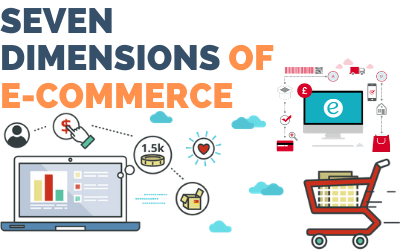Welcome to another article about technology. Today we are going to share some useful information about the e-commerce market. E-commerce is the process of selling and buying goods. But it is not as easy as we know their definition. Many of their strategies apply to sell services.
So we are going to share the best information e-commerce strategy and how you can implement it in your business, hope you guys like it. Let start

To understand the process of e-commerce strategy, considering the systematic examination of the strategic factor involved in looking at the most successful e-commerce companies, we see a strategy emerging, which is the model mentioned. It can be argued that this model can be applied to all forms of organization in the traditional field. However, this model is particularly applicable to assisting the needs of the e-commerce strategy of lying in preparation for land before addressing functional issues. Bond as leadership, organization learning, and infrastructure are shown in the diagram.
- Leadership
- Technology
- Services
- Infrastructure
- Brand
- Market
- Organization Learning
It can be argued that this model can be applied to all forms of organization in traditional sectors or informal sectors. However, this model is particularly applicable to meet the needs of the e-commerce strategy. The binding of an e-strategy lies in preparing the ground before addressing functional issues. Bonds form leadership, organizational learning, and infrastructure as shown in the figure. There is a strong interaction between these three components.
The primary driver and creator of the strategic vision is a CEO and senior officer of an organization. The market of intellectual capital has never been more extreme as experienced, proven, and successful leadership. Once the need to develop an e-strategy is identified, the most important issue facing the authorities is its infrastructure. It extends the technology spectrum from single Internet file servers connected to ISPs to information-intensive online transaction processing. Leadership with vision facilitates, encourages, and allows the organization to develop, encourage, and where institutional learning and memory flourish.
7S Framework System in E-Commerce Strategy
Here are some components of the 7s framework system and their definitions are outlined below:
- Strategy
The strategy can be followed as determining the course of action to achieve the desired goal, posting or vision
- Structure
The structure of an organization is the interrelation of processes and human capital to accomplish strategic objectives.
- System
Information systems and infrastructure of the organization. It is the nervous system through which the organization communicates in its environment. In developing an e-strategy, the hidden strength that an organization can create is a flexible system infrastructure. The three major dimensions of technology infrastructure are enterprise resource planning (ERP) systems, data warehousing, and knowledge management.
- Staff
Human Resource Management. Human capital makes us the basis of any organization. As an organization develops towards becoming knowledge-based, the value of the intellectual ass of an organization cannot and does not exceed the security of its skills. Therefore, outsourcing has been a trend in many organizations.
- Style
The corporate style generates a synthesis of the leadership philosophy of executive management, internal corporate culture, and the organization adopting breast markets, customers, and competitions.
- Skill
Distinct or distinct characteristics are associated with the human capital of an organization. The two skills that make up the pillar between which the information systems structure is supported are technical skills and relationship management skills.
- Share value
The concept that an organization uses to drive towards a common goal through common objectives and a common value set. Shared value can be defined as the critical meaning or concept that an organization uses to drive towards a common goal through a common goal and a common value set.
The key to achieving these is drivers for flexibility in the process, for lower transaction costs, and for customers to achieve mass customization.



